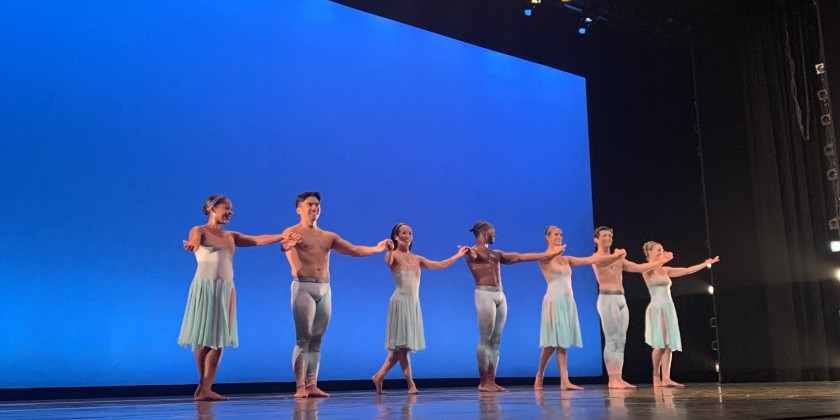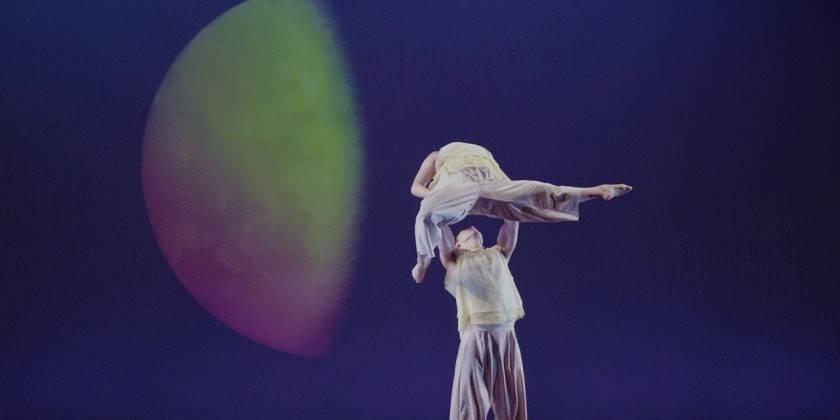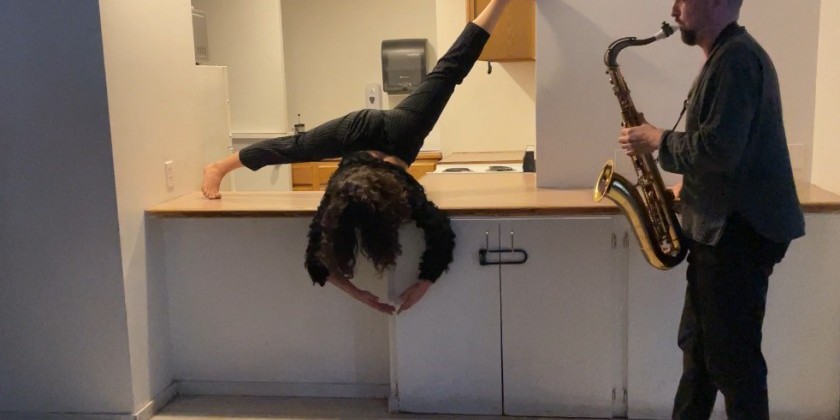AUDIENCE REVIEW: Paul Taylor Dance Company Presents Four Classics at The Joyce Theatre

Company:
Paul Taylor Dance Company
Performance Date:
June 25, 2024
Freeform Review:
Paul Taylor Dance Company premiered four classic pieces this week at The Joyce Theatre. The works were created between 1964-1978, but this incarnation demonstrated a vibrant energy and fresh perspective.
The show embarked with Private Domain, which brought the audience into a new, enticing world. Large square cutouts lined the front of the stage obstructing the audience’s view and forcing a different perspective of the dance. The artists created a mysterious and sensual world through various movement motifs: an elastic sway of the hips, the twirl of the wrist to fingertips, and architecturally sound positioning. The choreography was sharp and accented, alternating with stints of ease and serenity. The partnering, both fluid and connected, was representative of a tree, legs sturdy like the roots and arms flowing like freshly bloomed branches. The dancers utilized a variety of shapes, capturing the audience with moments of pause and unique stillness. At different points throughout the work, the dancers burst into a series of small sequential jumps. The juxtaposition of the dancers, with their focus either on each other or directly towards the audience, cultivated a sense that the dancers were both in their own world and inviting the audience in.
As the curtain opens in Duet, two dancers stand on stage in bright blue patterned unitards and construct a heart shape with their arms, each dancer making one half of the heart. This movement of the arms to create a shape of a heart is reinvented many times throughout the work. The movement is both elegant and regal as the dancers glide and slide their way across the stage. An ease and lightness is met with a deep strength and tenacity: rooted, powerful and vibrant. The duo partners gaze lovingly into each other's eyes with a look of endearment and honesty. To create each of the shapes is a moment of collaboration between the two artists, a unification of effort for the greater good. Countless times throughout the work, the dancers open their arms and arch their chest towards the horizon, welcoming in a spirit that seems to take us beyond the human realm. There are potent moments of symmetry as the dancers weave in and away from one another in unison. Similar to waves as they ricochet against the shore, the dancers travel towards and away from one another with grace and ease. As the piece reaches its conclusion, we see the dichotomy between individuality and partnership, and the possibility for both to co-exist simultaneously.
Big Birtha takes us out of the traditional concert dance scene into an act of comedy, rebellion, and violence. The piece commences with upbeat folk-style dancing; enthusiasm abounds. The piece starts with what appears to be the leader of a carnival, with a magician type feel, welcoming the audience in. The leader commands the attention of audience members with great effort and skill. A younger woman in a pink skirt and top with pigtails dances with an upbeat and carefree kind of energy, character-style dance movements interwoven with more classical jazz. She is clear and confident in her movement which in time, inspires the two other dancers, a couple in shades of blue, to join in on the groove. As the leader casts a spell on the dancers, the mood dampens. The male soloist is overtaken by the spell, hitting his partner, and injuring the other younger dancer. As the man and the young girl run behind the lighting board on stage, the female soloist removes her business casual dress and skirt, revealing a much more frayed and frenzied state. Before long, the male and young female behind the sign return, blood stained, clothing ripped. It is evident the man has committed an unthinkable assault. As all three of the dancers fall to the ground, the circus leader struggles to convince the dancers to move once more. The underpinnings of this work are abrupt and urgent, demonstrating the power of one individual to alter the lives of many.
The four-act show concludes on a light and elegant note with Airs. The costumes become an extension of the movements. Like leaves on a branch, the costumes’ motions at mercy to the requests of the wind. The work opens with a series of small piques around the stage, the dancers moving like a flock of birds bound together in the pursuit of a warmer destination. With a thematic principle similar to Private Domain, the dancers quickly change into sharp, springy, and buoyant movements. This feels like a defining characteristic of Taylor’s work, the ability to showcase such a depth and range within one individual piece, changes happening moment by moment, keeping the audience guessing about what will come next. Following larger group moments of symmetry and unison, we see sharp duets with quick feet, clarity, and focus. It feels like a long, pungent, run-on sentence. The dancers are onto their next movement just at the peak of their maximum expansion; equally athletic and artistic. Specific shapes are hit within the duets, coupled with breath and flow. Each of the duos have moments of unison, allowing the power of collective energy to breathe new life into the work. The piece concludes once again with all seven dancers of the cast on the stage. With four males and three females in this piece, there is a constant shift and reorganization to allow for the partnering. As the show concludes and audience members rise for a standing ovation, we are reminded what is possible in dance, and in life, when we leave space for continuous change to take place.
Author:
Rachel Marchica
Photo Credit:
Olivia Lowe











